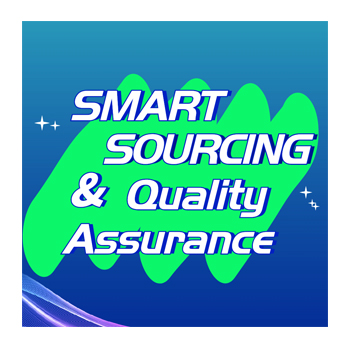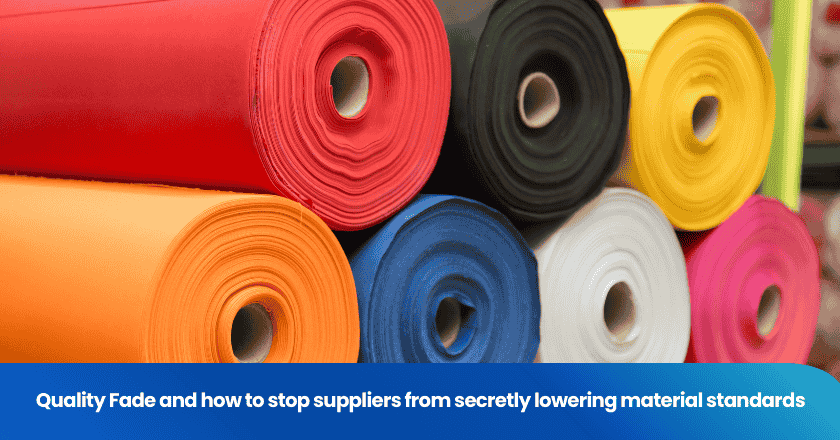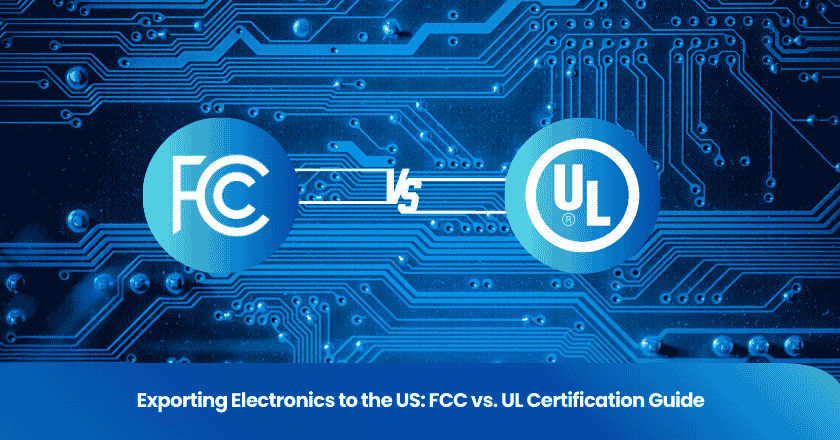
3rd party inspection companies face rapid changes in the tic market. Key trends include digital transformation, automation, and sustainability. These trends drive growth and open new opportunities. The market sees strong investment, pushing companies to improve compliance and quality. Sustainability shapes operations while compliance requirements become stricter. The tic market expands with new investment and growth. Market trends show rising opportunities for those who adapt. Investment in technology supports sustainability and ongoing growth. Companies that focus on compliance and sustainability gain a competitive edge in the tic market.
Key Trends in 3rd Party Inspection Companies
Digital Transformation
Digital transformation stands as a major driver in the tic market. 3rd party inspection companies use digital tools to improve inspection accuracy and speed. Digital platforms help manage testing, inspection, and certification data. These tools support remote inspection and real-time reporting. Digitalization also helps companies meet new regulations and standards. The market sees more investment in digital quality control solutions. Digital transformation creates new opportunities for growth and innovation. Companies that adopt digital systems can offer better quality assurance and safety. Digital records make compliance and certification easier to track. The tic market benefits from digital innovation and improved quality.
Automation
Automation changes how 3rd party inspection companies work. Automated systems handle routine inspection tasks and reduce errors. Robotics and AI help with pre-shipment inspection and testing. Automation supports faster certification and quality assurance. The market sees more investment in automated inspection tools. These tools help companies meet strict standards and regulations. Automation improves safety and reduces risks in the tic market. Companies use automation to keep up with emerging trends and market growth. Automated systems also support remote inspection and data collection. Automation drives efficiency and opens new opportunities for innovation.
ESG and Compliance
ESG and compliance shape the future of the tic market. 3rd party inspection companies must follow strict regulations and standards. ESG drivers push companies to focus on sustainability and safety. The market demands more transparency in testing, inspection, and certification. Companies invest in ESG programs to meet compliance goals. New regulations create challenges and opportunities for growth. ESG trends lead to more investment in green technologies and quality assurance. Compliance with global standards supports market expansion. Companies that meet ESG and compliance requirements gain certifications and improve their reputation. The tic market rewards those who focus on quality, safety, and innovation.
Note: Market trends show that investment in digital transformation, automation, and ESG compliance will continue to drive growth and create new opportunities for 3rd party inspection companies in the coming year.
AI and Machine Learning in Inspection
Artificial intelligence and machine learning change the way inspection works in the testing, inspection, and certification industry. These technologies bring new opportunities for defect inspection services and help companies meet strict standards. AI and machine learning support quality, safety, and compliance in every step of the inspection process. Companies see more innovation and better quality assurance as they use these emerging tools.
Enhanced Accuracy
AI and machine learning improve the accuracy of inspection. These systems can find small defects that people might miss. Defect inspection services use AI to check products and materials for quality and safety. AI tools help companies follow standards and meet compliance rules. The use of AI in testing, inspection, and certification leads to fewer errors and better results. Companies trust AI to support quality assurance and safety in their inspection work.
Efficiency Gains
AI and machine learning make inspection faster and more efficient. Automated systems handle large amounts of data from defect inspection services. These systems help companies meet tight deadlines and keep up with emerging trends. AI tools support testing, inspection, and certification by reducing manual work. Companies see more opportunities for growth as they use AI to improve quality and safety. AI-driven inspection supports higher standards and better quality assurance.
AI and machine learning open new doors for innovation in defect inspection services. Companies use these tools to meet the highest standards and improve safety.
Compliance Monitoring
AI and machine learning help companies monitor compliance with industry standards. These systems track changes in regulations and support testing, inspection, and certification. Companies use AI to check if their defect inspection services meet all safety and quality rules. AI tools help companies stay ahead of emerging compliance needs. Careful monitoring of AI use is important because legal and ethical standards keep changing. Companies that use AI for compliance gain more opportunities and improve their reputation for quality and safety.
IoT and Smart Sensors
Real-Time Data
IoT and smart sensors change the way companies handle inspection in the tic market. These devices collect real-time data from equipment and products. The market now expects faster and more accurate defect inspection services. Sensors send instant alerts when they find problems. This helps companies fix issues before they affect quality. Real-time data supports better decision-making in the inspection process. Companies use this data to improve quality and meet market demands. The tic market values quick responses to problems. Real-time monitoring also helps companies follow strict inspection rules. The market sees more companies using IoT to boost quality and safety.
Predictive Maintenance
Predictive maintenance uses data from smart sensors to spot problems early. The market benefits when companies prevent equipment failures before they happen. Inspection teams use this data to plan repairs and avoid downtime. Predictive tools help defect inspection services keep machines running smoothly. The tic market rewards companies that use predictive maintenance to improve quality. Sensors track equipment health and send alerts for needed repairs. This approach reduces costs and supports better inspection results. The market sees predictive maintenance as an emerging trend. Companies that use these tools lead the way in quality and safety.
Data-Driven Insights
Smart sensors provide data that helps companies learn more about their inspection processes. The market relies on these insights to improve defect inspection services. Data-driven decisions lead to higher quality and better results. Companies use analytics to find patterns and solve problems faster. The tic market values companies that use data to guide inspection work. Data-driven insights help teams spot emerging risks and improve quality. The market expects companies to use these tools for better defect inspection services. Insights from sensors support compliance and help companies stay ahead in the tic market. The use of data-driven insights marks a shift in how the market views inspection and quality.
Companies that use IoT and smart sensors gain a strong position in the market. They deliver better defect inspection services and improve quality across the tic market.
Remote and Virtual Inspection
Flexibility
Remote and virtual inspection bring new flexibility to the industry. Teams can now perform inspection tasks from different locations. This approach allows companies to schedule inspection at any time. Remote inspection helps companies reach sites that are hard to access. Many teams use remote tools to support defect inspection services in real time. Remote inspection also reduces travel time and costs. Companies can use remote inspection to check equipment and products without sending inspectors on-site. This flexibility supports faster defect inspection services and better quality control. Remote inspection services help companies respond quickly to urgent needs. Teams can use remote inspection to handle more projects in less time.
Security
Security remains a top concern for remote and virtual inspection. Companies must protect sensitive data during each inspection. Remote inspection uses secure networks to send inspection results. Teams rely on encrypted tools to keep defect inspection services safe. Remote inspection systems use strong passwords and access controls. These steps help prevent data leaks during remote inspection. Companies train staff to follow security rules for every inspection. Remote inspection also uses secure storage for inspection records. Teams check security settings before starting remote inspection. Security in remote inspection supports trust in defect inspection services. Companies that focus on security improve their inspection reputation.
Industry Adoption
The industry now adopts remote and virtual inspection at a fast pace. Many companies use remote inspection to expand defect inspection services. Remote inspection helps companies meet new market demands. Teams use remote inspection to offer faster and more reliable defect inspection services. The industry sees remote inspection as a way to improve efficiency. Companies invest in remote inspection tools for better defect inspection services. Remote inspection supports growth in the inspection sector. Teams use remote inspection to reach more clients and offer new services. The industry values remote inspection for its speed and accuracy. Remote inspection continues to shape the future of defect inspection services.
Blockchain in Testing, Inspection, and Certification
Transparency
Blockchain technology brings new transparency to the tic market. Companies in the testing, inspection, and certification sector use blockchain to record every inspection step. The market values clear records that cannot be changed. Blockchain creates a digital ledger for each certification. This ledger shows the full history of every inspection. The tic market trusts blockchain because it prevents tampering. Each entry in the blockchain links to a specific inspection or certification. The market sees this as a way to build trust with clients. Blockchain helps companies prove that their testing, inspection, and certification processes meet high standards. The tic market benefits from this open approach. Companies can show regulators and clients every detail of an inspection. The market expects more companies to use blockchain for transparency in certification.
Blockchain gives the tic market a tool for open and honest inspection records. This helps companies meet strict certification rules and build trust.
Traceability
Traceability stands as a key benefit of blockchain in the tic market. Companies track every step in the testing, inspection, and certification process. The market demands proof that each certification follows the right steps. Blockchain records each inspection in order. This helps companies trace the path from the first test to the final certification. The tic market uses blockchain to check the source of every certification. Companies can find problems faster by tracing inspection records. The market values this clear chain of events. Blockchain supports the tic market by making every inspection easy to follow. Companies use this traceability to meet market rules and improve quality. The tic market sees traceability as a way to raise standards in testing, inspection, and certification. Companies that use blockchain for traceability lead the market in quality and trust.
• Blockchain supports:
Full inspection traceability
Secure certification records
Reliable testing, inspection, and certification data
Cybersecurity for Inspection Services
Threats
Cybersecurity stands as a top priority in the tic market. Inspection companies face many threats that can impact safety and compliance. Hackers target inspection data to disrupt operations and steal sensitive information. The tic market sees more attacks as digital transformation and automation increase. Cybercriminals look for weak points in systems that manage safety and compliance records. These threats can lead to loss of trust in the market. Companies must protect data to meet regulations and maintain growth. The tic market faces risks from phishing, ransomware, and insider threats. Each attack can affect compliance with industry standards and safety rules. The market expects companies to respond quickly to new threats. Strong cybersecurity helps companies keep up with changing regulations and standards.
Best Practices
Inspection companies use best practices to protect against cyber threats in the tic market. They train staff to spot phishing and follow safety rules. Companies update software to meet the latest standards and block attacks. The tic market values regular security checks and strong passwords. Teams use secure networks to protect compliance data and safety records. Companies follow industry standards to meet regulations and support growth. The tic market rewards those who invest in cybersecurity and safety. Inspection teams use encryption to keep data safe and meet compliance goals. Companies monitor systems for signs of attack and respond fast. The market expects companies to review security plans often and adjust to new regulations. Best practices help companies stay ahead in the tic market and support ongoing growth.
Tip: Regular training and system updates help inspection companies meet compliance and safety standards in the tic market.
Sustainability and ESG Trends
Green Technologies
Green technologies drive new trends in the inspection industry. Companies focus on sustainability to support long-term growth. They use advanced tools to measure environmental sustainability in every project. These tools help teams track compliance with strict standards. Inspection teams see growth when they invest in green solutions. Green technologies support environmental sustainability by reducing waste and energy use. Companies use sensors and data systems to monitor compliance and improve sustainability. These efforts lead to steady growth and better results. Teams that follow environmental sustainability practices gain trust and meet compliance goals. The industry sees more trends that link green technology to growth and sustainability.
Companies that lead in environmental sustainability often set new standards for compliance and growth. Their focus on sustainability shapes industry trends and supports ongoing improvement.
Environmental Compliance
Environmental compliance stands as a key part of sustainability in inspection services. Teams must follow rules that protect environmental sustainability. Compliance checks help companies avoid fines and support steady growth. Inspection teams use digital tools to track compliance and report on sustainability. These systems make it easier to meet environmental sustainability goals. Growth in the industry depends on strong compliance programs. Teams that focus on compliance and sustainability see better results and more opportunities. Environmental sustainability drives new trends in how companies manage compliance. Teams use training and audits to keep up with changing rules. Growth comes when companies make compliance and sustainability a top priority.
• Key actions for environmental compliance and sustainability:
Train staff on environmental sustainability rules
Use digital tools for compliance tracking
Audit processes for ongoing growth
Report on sustainability progress
Environmental sustainability and compliance work together to drive growth and shape industry trends. Companies that invest in both areas lead the way in inspection services.
Market Growth and Regulatory Shifts
TIC Market Expansion
The global tic market shows strong growth. Many drivers push this expansion, including new technologies and rising demand for quality. Companies in the testing, inspection, and certification sector see more opportunities each year. The market values high standards and strict compliance. Inspection teams focus on quality and safety to meet client needs. Certifications play a key role in building trust. The tic market rewards companies that deliver reliable inspection and certification services. Growth in the market creates new jobs and supports innovation. The global tic market continues to attract investment. Companies that adapt to market changes find more opportunities for growth.
Regulatory Changes
Regulations shape the tic market. New standards and rules appear often. Inspection companies must follow strict compliance requirements. Regulatory compliance ensures safety and quality in every project. The market expects companies to update processes to meet new regulations. Testing, inspection, and certification teams track changes in standards. Certifications depend on meeting all regulatory compliance goals. The tic market faces more regulations as industries grow. Companies that stay ahead of regulatory changes gain more opportunities. Inspection teams use digital tools to manage compliance and track certifications. The market sees regulations as drivers for better quality and safety.
Note: Regulatory compliance supports market growth and protects quality in the testing, inspection, and certification sector.
Labor and AI Compliance
Labor trends impact the tic market. Companies need skilled workers for inspection and certification tasks. The market also sees more automation and AI in inspection. Teams must follow labor standards and ensure regulatory compliance. AI tools help with testing, inspection, and certification, but companies must check compliance with new rules. Certifications require both human skill and technology. The market values safety and quality in every inspection. Labor and AI compliance create new opportunities for growth. Inspection teams train staff to meet standards and use AI safely. The tic market rewards companies that balance technology and skilled labor. Growth depends on meeting labor and AI compliance in the testing, inspection, and certification industry.
Non-Destructive Testing Trends
Advanced Methods
Non-destructive testing methods continue to evolve in the testing, inspection, and certification industry. Companies now use ultrasonic, radiographic, and eddy current techniques for inspection. These advanced methods help teams find defects without damaging materials. Inspection teams rely on digital imaging to improve accuracy. Testing, inspection, and certification professionals use drones for hard-to-reach areas. Automated inspection systems speed up the process and reduce errors. Many companies use advanced sensors to collect real-time data during inspection. These methods support strict certification requirements. Inspection teams can now detect even the smallest flaws. Testing, inspection, and certification standards push for better technology every year.
Advanced inspection methods help companies meet the highest certification standards and improve safety.
Industry Applications
Non-destructive testing plays a key role in many industries. The testing, inspection, and certification sector supports oil and gas, aerospace, automotive, and construction projects. Inspection teams check pipelines, aircraft parts, and building structures. Certification depends on passing strict inspection tests. Testing, inspection, and certification experts use non-destructive testing to ensure product safety. Inspection results help companies avoid costly failures. Certification bodies require regular inspection for compliance. Testing, inspection, and certification services help companies meet industry regulations. Inspection teams provide reports that support certification. Testing, inspection, and certification professionals work with clients to improve quality. Inspection remains essential for safe and reliable operations.
• Key industry uses for non-destructive testing:
Inspection of welds in pipelines
Testing, inspection, and certification of aircraft components
Certification of automotive parts
Inspection of concrete in construction
Inspection and certification through non-destructive testing protect people and the environment.
The tic market continues to evolve with new trends. Companies see growth by using advanced certification tools and focusing on quality. Safety remains a top priority as regulations and standards change. Teams must track compliance and invest in sustainability. The market rewards those who adapt to new opportunities. Regular training supports safety and quality. Companies that follow standards and meet certification goals lead the tic market. Monitoring regulations and trends helps teams find growth and improve safety. The market values strong compliance, quality, and sustainability for long-term opportunities.

Smart Sourcing & Quality Assurance Content Team
Article by Smart Sourcing & Quality Assurance Content Team
The Smart Sourcing & Quality Assurance Content Team is dedicated to delivering high-quality, easy-to-understand information that empowers our audience to navigate the complexities of global sourcing and quality assurance. Our team of writers has extensive experience in creating content across various fields, including procurement, supply chain management, quality assurance, market trends, and industry best practices. We specialize in sectors such as apparel, textiles, and consumer goods, providing targeted insights to help businesses in these industries optimize their sourcing strategies, ensure product quality, and maintain a competitive edge in the market.
Grow your business with TradeAider Service
Click the button below to directly enter the TradeAider Service System. The simple steps from booking and payment to receiving reports are easy to operate.



